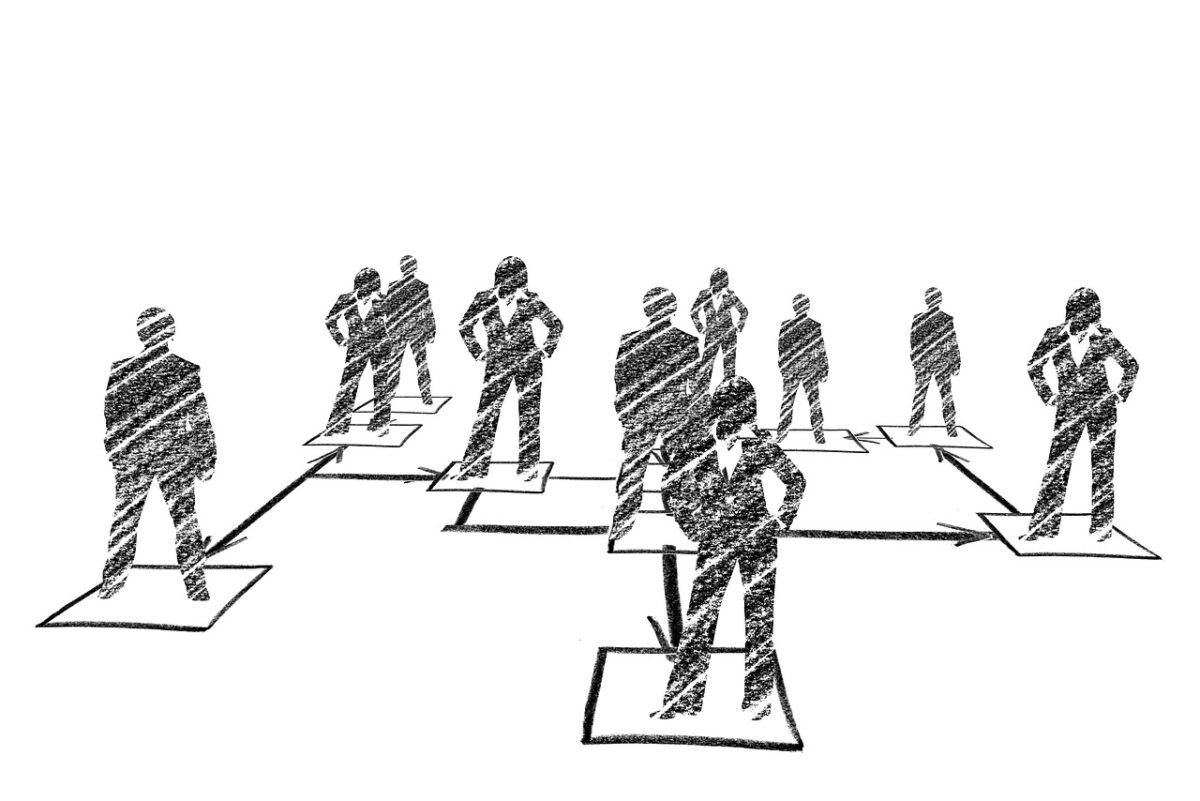Job Descriptions: A Simple Definition

In the intricate world of recruitment and human resources, the cornerstone of any successful hiring process begins with understanding the job description meaning. Our blog provides a simple and long definition of the job description and goes on to define related terms while sharing insights and resources across the entire recruitment process.
Quick Links:
- Defining Job Descriptions
- Core Components Of A Job Description
- Enhancing Job Descriptions
- Recruitment Process
- Templates And Samples
- Beyond The Job Description
- Job Description FAQs
Highlights And Key Takeaways:
- A job description outlines a job’s essential responsibilities, activities, qualifications, and skills.
- As job description experts, we have created thousands of job description examples for job titles across all industries in the UK.
- Editing and downloading job descriptions samples speeds up the writing process significantly, so you can start advertising your job vacancy sooner.
Defining Job Descriptions

A Simple Job Description Definition
A job description outlines a job’s essential responsibilities, activities, qualifications, and skills. It’s a document that describes the job, including the key tasks, the experience level needed, and the qualifications required to perform it successfully. It serves as a foundation for job postings, setting clear expectations for candidates about what the role will involve.
A Long Job Description Definition
In a more expansive sense, a job description is a strategic HR tool that details a job’s purpose, scope, duties, responsibilities, and working conditions. It includes information on required qualifications, such as education, skills, experience, and specific performance criteria. A well-written job description serves multiple purposes: it aids in the recruitment and selection process by attracting suitable candidates; it forms the basis for the employment contract; it provides a clear benchmark for performance appraisal; and it identifies training and development needs. Beyond these practical applications, a good job description play a crucial role in strategic HR management by ensuring alignment between the job’s demands and the organisation’s goals, facilitating workforce planning, and helping to maintain compliance with labour laws and regulations.
Related Terms
- Job Specification: While a job description outlines the tasks and responsibilities of a job, the job specification lists the qualifications, skills, and experience required from a candidate to fill the position. It focuses on the attributes the candidate needs to have to perform the job well.
- Job Advert: This marketing communication promotes a vacant position. It’s derived from the job description but is tailored to attract candidates by highlighting the most appealing aspects of the job and the company.
- Blank Job Description Template: Organisations can use a structured outline to create specific job descriptions for various roles, ensuring consistency and completeness across all documentation.
- Job Title: The name given to a particular job that reflects its nature and the level of the position within the organisation.
- Job Responsibilities and Duties: These are the core tasks and obligations of the job. Responsibilities are broader areas of oversight, while duties are specific tasks.
- Preferred and Required Qualifications: ‘Required qualifications’ are non-negotiable criteria for candidates, while ‘preferred qualifications’ are additional skills or experiences that would benefit the role but are not essential.
- Technical, Soft, and Hard Skills: Technical skills refer to the specific knowledge and abilities needed for the job. Soft skills are personal traits and social abilities; hard skills are learned abilities acquired and enhanced through practice, repetition, and education.
- Job Summary: A brief overview of the main purpose and scope of the job, providing a snapshot of what the job entails and where it fits within the organisation.
By understanding these definitions and related concepts, employers and HR professionals can craft effective job descriptions that attract the right candidates and contribute to the strategic management of human resources within the organisation.
Core Components Of A Job Description

Crafting an effective job description requires a deep understanding of its core components. Each element plays a crucial role in attracting the right candidates and ensuring a clear understanding of the job’s requirements. Let’s delve into these components:
Job Title: Setting the Stage
- Significance: The job title serves as the headline of the job description, crucial for capturing the attention of potential candidates. It should be clear, concise, and reflective of the role’s duties and responsibilities. An accurate job title ensures the position is identifiable and accessible to the right candidates, optimising the recruitment process.
- Best Practices: Drawing from What To Include In A Job Description and Job Title Examples, select a job title that is both descriptive and aligned with industry standards to avoid confusion and ensure clarity about the job position.
Job Summary: Crafting a Compelling Overview
- Crafting an Overview: The job summary provides a snapshot of the role, encapsulating the main tasks, its relevance to the company’s business goals, and how it fits within the organisational hierarchy. This brief introduction sets the tone for the following detailed description, highlighting the job’s significance and contribution to the company’s success.
- Elements to Include: Key elements include the reporting structure, department, and a concise explanation of how the role supports achieving business goals, offering candidates a clear understanding of the job position. For more job summary writing tips, check out our blog, What To Include In A Job Summary When Writing A Job Description.
Job Responsibilities and Duties: The Core of the Role
- Differentiating: It’s crucial to distinguish between the role’s broader responsibilities and specific duties or main tasks. Responsibilities outline the scope and overarching areas of accountability, while duties detail the day-to-day tasks essential for fulfilling those responsibilities. Our blog, What Are Job Duties? emphasises the importance of using clear, actionable language to describe these elements accurately.
- Implementation: For clarity and effectiveness, list responsibilities and duties using bullet points, starting with the most critical tasks. This approach helps candidates understand the role’s scope and assess their fit based on the necessary skills and expected activities.
Required and Preferred Qualifications: Ensuring the Right Fit
- Setting the Standards: Delineate essential qualifications candidates must possess from those that are preferred but not mandatory. This distinction helps streamline the application process by attracting candidates who meet the fundamental requirements and identifying those who bring additional desirable skills.
- Application: Specify the qualifications, including necessary skills, certifications, or experiences, distinguishing between those required for the role and additional qualifications that enhance a candidate’s application.
Technical, Soft, and Hard Skills: Identifying Key Competencies
- Defining Each: Clearly outline the technical skills (job-specific abilities), soft skills (interpersonal qualities), and hard skills (measurable abilities) required for the position. This detailed breakdown helps candidates self-assess their suitability for the role based on their skills.
- Significance: These skills are crucial for performing job duties effectively and aligning with the company’s culture and values. Highlighting them in the job description ensures candidates know what is expected and can identify areas for potential growth.
Culture and Values: Reflecting the Organisation’s Ethos
- Infusion of Culture and Values: Incorporating the company’s culture and values into the job description attracts candidates aligned with your organisational ethos and fosters a sense of belonging from the start. This section should convey what makes your company unique and why someone would want to work there.
- Implementation Tips: Drawing from How To Infuse Company Culture And Brand Values Into Your Job Descriptions, share real-life examples of your company’s culture in action. Describe how the values influence decision-making and daily operations to give candidates a genuine insight into your work environment.
By meticulously addressing each of these core components, employers can create job descriptions that not only clarify the role’s expectations but also highlight the unique aspects of their company, thereby attracting the right candidates.
Enhancing Job Descriptions

Crafting job descriptions that capture the essence of the role and welcome a diverse pool of candidates is vital in today’s job market. This section delves into enhancing job descriptions with inclusive language, precise job specifications, and understanding the synergy between job adverts and job descriptions.
Inclusive Language: Welcoming Diversity
- The Importance of Inclusivity: Using inclusive language in job descriptions is not just about compliance or ticking a box; it’s about signalling your company’s commitment to welcoming diversity and fostering an inclusive workplace. This approach broadens the pool of potential candidates by ensuring that no one feels excluded based on gender, culture, or background.
- Implementation Tips: Avoid gender-coded words, such as ‘dominant’ or ‘nurturing,’ which can subconsciously deter certain demographics from applying. Instead, focus on skills and qualifications necessary for the job. Clearly state your organisation’s commitment to diversity and inclusion at the beginning or end of the job description to reinforce this message.
Job Specification: Detailing Candidate Requirements
- A Detailed Look: A job specification goes beyond the basic job description to define the specific skills, experiences, and qualifications a candidate must possess to perform the job effectively. It is derived from a thorough job analysis and provides a basis for measuring job performance and conducting performance evaluations. As outlined in our blog, How To Write A Job Specification, it’s crucial to be clear and precise about the requirements to attract the right candidates.
- Elements to Include: List essential qualifications, desired experience levels, technical abilities, soft skills, and any necessary certifications. Including a salary range can also enhance transparency and manage candidate expectations from the outset.
Job Advert vs. Job Description: Clarifying the Distinction
- Understanding the Difference: While often used interchangeably, job descriptions and job adverts serve different purposes. A job description defines the role, responsibilities, and qualifications needed, serving as an internal document that guides recruitment, job analysis, and performance evaluations. On the other hand, a job advert is an external-facing document designed to attract candidates to apply for vacant jobs. It highlights the most appealing aspects of the position and the company, often including information on salary range and company culture.
- How They Complement Each Other: The job description provides the foundation for creating a compelling job advert. The advert distils and markets the key points of the job description, targeting the desired audience and encouraging them to apply. As discussed in The Difference Between A Job Description And A Job Advert, understanding and leveraging the strengths of each document can significantly enhance the recruitment process.
Employers can create effective and appealing job postings by adopting inclusive language, providing detailed job specifications, and understanding the relationship between job descriptions and job adverts. These enhancements attract a diverse and skilled set of candidates and clarify expectations and requirements, setting the stage for successful recruitment and long-term employee satisfaction. You can explore the topic of crafting the perfect job descriptions in our blog The Perfect Job Descriptions, which dissects an excellent job description example in detail.
Recruitment Process

A streamlined recruitment process attracts the right candidates and sets the tone for their journey within the organisation. This section explores optimising the application process, crafting an interview process that mirrors the job description, and ensuring a seamless onboarding experience for new hires.
Application Process: Streamlining for Success
- Attracting the Right Candidates: The application process should reflect your organisation’s efficiency and respect for candidates’ time. Ensuring that the job description is clear and highlights the role’s benefits can help attract the ideal candidate. The Hiring Manager should outline not just the job responsibilities but also the training programs and development plans available, making the position more appealing.
- Simplification: Simplify the application process to avoid deterring qualified candidates with unnecessarily complicated procedures. A straightforward process respects the applicant’s time and reflects positively on your company culture.
Interview Process: Reflecting on the Role’s Requirements
- Designing the Process: The interview process should directly reflect the job description, acting as a reference point for both the interviewer and the candidate. This ensures that discussions are relevant and focused on the qualifications and competencies outlined in the job description. Utilising our Interviewer Resources can help Hiring Managers prepare questions and scenarios that accurately assess candidates’ fit.
- Leveraging Insights: Incorporating example questions and answers from our blog Job Interview Questions And Example Answers into your interview process can provide a structured framework for evaluating candidates, ensuring the process is comprehensive and fair.
Employee Onboarding: Facilitating a Smooth Transition
- Ensuring a Seamless Experience: Effective onboarding begins with ensuring that the reality of the role matches the expectations set during the recruitment process. This alignment is crucial for retaining talent and fostering a positive work environment. An onboarding process that introduces new hires to their team outlines clear development plans, and integrates them into the company culture can significantly enhance employee satisfaction and long-term engagement.
- Integration of Training Programs: Including an overview of available training programs and benefits during onboarding helps new employees feel valued and invested from the start. This approach not only aids in skill development but also aligns new hires with the organisation’s goals and values, paving the way for their growth and the company’s success.
Employers can ensure that they attract and retain the right talent by meticulously aligning each stage of the recruitment process with the job description and organisational values. From the initial application to the interview and the onboarding process, providing a clear, streamlined, and reflective experience is key to building a strong and engaged workforce.
Templates And Samples

Creating accurate and engaging job documents is vital in attracting the right candidates. Below are essential tools to aid this process:
- Blank Job Description Template: A template and guide breaking down all the job descriptions’ important parts, so you can write a text that accurately reflects the role, from tasks to skills required.
- Blank Job Advert Template: A template and guide for creating compelling job adverts, from company overview to salary and benefits.
- Job Description Samples: As job description experts, we have created thousands of job description examples for job titles across all industries in the UK, from Delivery Driver Job Description to Security Guard Job Description. Editing and downloading samples speeds up the writing process significantly, so you can start advertising your job vacancy.
Beyond The Job Description

Crafting a comprehensive job description is just the beginning of the recruitment journey. The next steps involve leveraging various platforms and strategies to attract candidates, making compelling offers, and formalising the employment relationship. Here’s a closer look at some key concepts that play a crucial role in this process:
- Job Board: An online platform where employers post job vacancies to attract candidates. These platforms range from generalist sites, which host various job listings, to niche boards specialising in specific industries or professions.
- Job Board Reseller: A service or platform that purchases job advertising space in bulk from job boards and then sells these postings to employers. This allows companies to access discounted rates and broader exposure for their job listings.
- Flat Fee Recruitment: A recruitment model where the employer pays a set fee for a recruitment service instead of traditional percentage-based commissions. This approach provides budget certainty and can often include services like advertising, candidate screening, and initial interviews.
- Branded Job Advertising: Advertising that lists a job opening and promotes the employer’s brand. This strategy aims to attract candidates by highlighting the company’s culture, values, and benefits, making it a more attractive workplace.
- Job Offer: A formal proposal detailing the terms of employment, including position, salary, benefits, and start date, is provided to a candidate. It may be extended verbally or in writing and typically requires acceptance by the candidate to proceed.
- Employment Contract: A legally binding agreement between employer and employee that outlines the terms and conditions of employment. This contract specifies both parties’ duties, responsibilities, rights, and obligations and serves as a reference throughout the employment period.
Job Description FAQs
Here we answer common job description questions from Hiring Managers, HR professionals, employers, and job seekers:
A job description is a document that outlines the primary duties, responsibilities, required qualifications, and reporting relationships of a specific job. It acts as a blueprint, detailing what is expected from the job holder and serving as a guide for both the employer and the employee. It’s like a map for the role within the organisation, showing where it sits, what it entails, and how it contributes to the business’s overall objectives.
A job description is typically defined by senior management or the human resources (HR) department in collaboration with the department head or direct supervisor of the specific role. It’s a collective effort to ensure the description accurately reflects the needs of the department and the organisation as a whole. The process might also involve input from incumbents or past employees to refine the role’s requirements and expectations based on practical experience.
The purpose of a job description is multifaceted: 1. Clarity and Direction: It clearly outlines the expectations for candidates and employees and details what is required of them in their roles. 2. Recruitment and Selection: It aids in the recruitment process, helping to attract suitable candidates by clearly outlining the role’s duties and qualifications. 3. Performance Management: It serves as a benchmark for performance appraisals, setting clear standards and objectives against which employee performance can be measured. 4. Legal and Organisational Compliance: It helps ensure compliance with employment laws by clearly defining job roles and responsibilities, reducing the risk of disputes. 5. Career Development: It assists in identifying training and development needs by outlining the skills and competencies required for the role.
A job specification is a detailed description of the personal qualities, skills, academic qualifications, and experience required from a candidate for a specific job. Think of it as the ‘person specification’ that complements the job description. While the job description outlines what the job entails, the job specification lists the key criteria the candidate must meet to be considered for the role. This can include educational background, experience, technical skills, soft skills, and personal attributes necessary to perform the job effectively.



